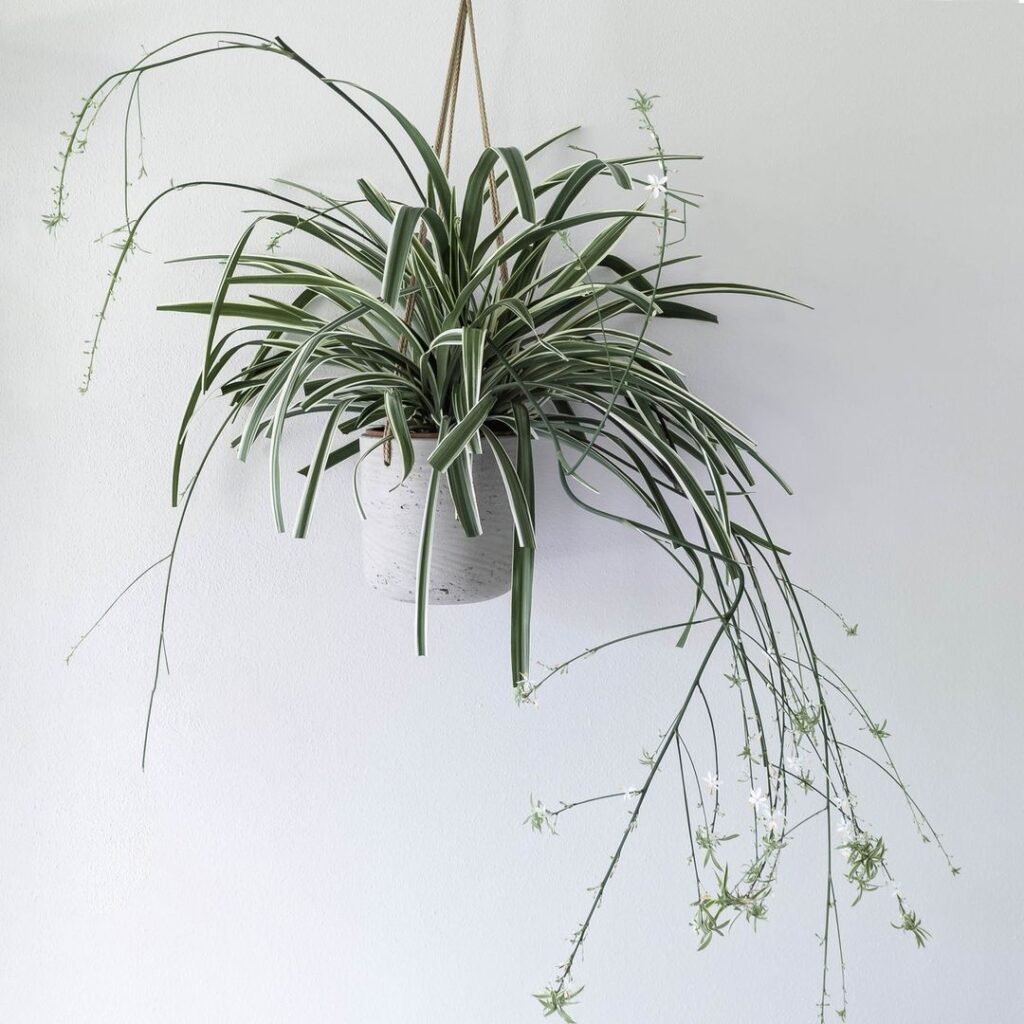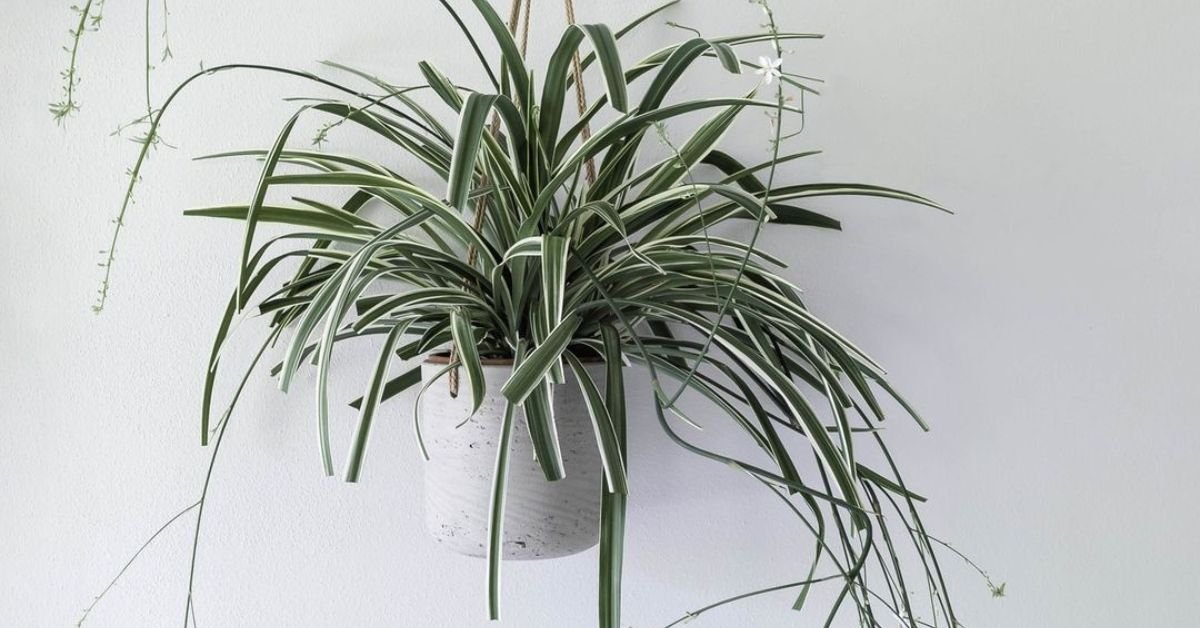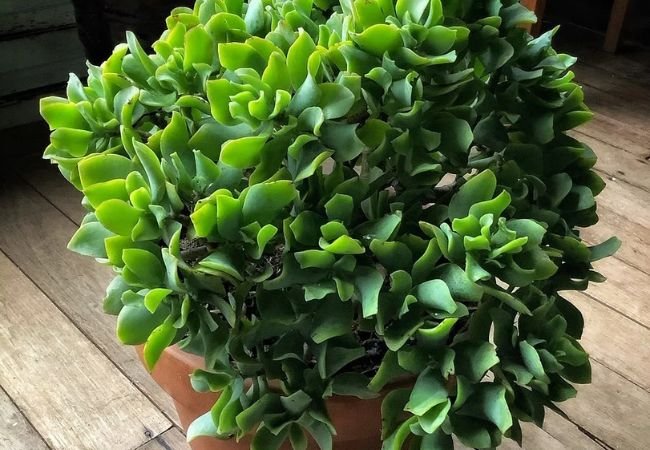Discover the ultimate guide to cultivating thriving Spider plants (Chlorophytum comosum) in your home. Learn essential tips for proper care, propagation techniques, and troubleshooting common issues to enjoy these low-maintenance beauties for years to come.
If you’re looking for an easy-to-care-for houseplant that adds a touch of greenery and charm to your living spaces, the spider plants (Chlorophytum comosum) might just be the perfect choice. Known for its unique appearance and ability to thrive in various conditions, this resilient plant is a favorite among novice and experienced gardeners alike. In this comprehensive guide, we’ll cover everything you need to know to grow and care for these captivating plants successfully.
Here’s a short chart with information about Spider Plants (Chlorophytum comosum):
| Aspect | Information |
|---|---|
| Botanical Name | Chlorophytum comosum |
| Common Names | Spider Plant, Airplane Plant, Ribbon Plant |
| Plant Type | Perennial, typically grown as a houseplant |
| Zones | 9-11 (outdoors); can be grown as a houseplant in all zones |
| Exposure | Bright, indirect light |
| Bloom Time | Spring to early summer (indoors may bloom year-round) |
| Height/Spread | 12-15 inches tall, 15-24 inches wide |
Understanding Spider Plants

Spider plants are native to tropical and subtropical regions of Africa and Asia. They belong to the Asparagaceae family and are characterized by their long, slender leaves that arch gracefully outward from the center of the plant. One of the most distinctive features of spider plants is their ability to produce small plantlets or “spiders” that dangle from the ends of their leaves, making them a delightful addition to any home or office.
Getting Started: Choosing the Right Spider Plant
When selecting a spider plant, look for healthy specimens with vibrant green leaves and minimal signs of damage or discoloration. You can opt for a mature plant or choose a smaller one to watch it grow and develop over time. Spider plants are readily available at most nurseries, garden centers, and even some grocery stores.
Soil Requirements
Spider plants aren’t too fussy about soil, but they do prefer a well-draining potting mix. A combination of equal parts peat moss, perlite, and potting soil works well. Alternatively, you can use a high-quality commercial potting mix formulated for houseplants. Ensure the soil has adequate drainage to prevent root rot and other moisture-related issues.
Lighting Needs
Spider plants can adapt to a wide range of light conditions, but they thrive best in bright, indirect sunlight. East or west-facing windows are ideal locations for these plants. If you notice the leaves losing their vibrant green color or becoming pale, it could be a sign that they’re not receiving enough light. Conversely, direct sunlight can scorch the leaves, so it’s essential to find the right balance.
Watering Guidelines
Consistent watering is crucial for the health and growth of your spider plant. The soil should be allowed to dry out slightly between waterings, but avoid letting it become completely dry. During the growing season (spring and summer), water your plant when the top inch of soil feels dry to the touch. In the winter months, when growth slows down, you can reduce watering frequency.
Remember to water thoroughly, ensuring the excess moisture drains from the bottom of the pot. Spider plants are sensitive to both underwatering and overwatering, so finding the right balance is key.
Temperature and Humidity
Spider plants thrive in average household temperatures ranging from 65°F to 75°F (18°C to 24°C). They can tolerate slightly cooler or warmer temperatures but may experience stress or stunted growth in extreme conditions.
As for humidity, spider plants prefer moderate to high humidity levels. If the air in your home is particularly dry, consider placing the plant on a pebble tray filled with water or grouping it with other plants to create a microclimate. You can also mist the leaves occasionally to increase humidity around the plant.
Fertilizing Your Spider Plant
Spider plants benefit from regular fertilization during their active growing season. Use a balanced, water-soluble fertilizer diluted to half strength every two to four weeks. Alternatively, you can opt for a slow-release fertilizer applied according to the manufacturer’s instructions.
Avoid over-fertilizing, as this can lead to excess salt buildup in the soil, which can damage the plant’s roots. Always follow the recommended dosage on the fertilizer packaging.
Pruning and Grooming
Pruning your spider plant can help maintain its shape and encourage new growth. Remove any yellow or damaged leaves by cutting them off at the base of the plant. You can also trim back leggy or overgrown stems to promote bushier growth.
Regularly remove the small plantlets or “spiders” that form on the ends of the leaves. These can be propagated to create new plants, or you can simply discard them if you don’t want your spider plant to spread.
Repotting and Propagation
Spider plants have a vigorous growth habit and may eventually outgrow their containers. It’s generally recommended to repot your plant every two to three years in the spring or early summer. Choose a pot slightly larger than the previous one, and use fresh, well-draining potting mix.
Propagating spider plants is incredibly easy and can be done through division or by rooting the plantlets. To divide the plant, gently remove it from its pot and carefully separate the offshoots or pups from the main plant, ensuring each division has a portion of roots. Pot them up individually in their own containers.
Alternatively, you can root the plantlets by snipping them off the mother plant and placing them in water or moistened potting mix until roots develop. Once rooted, transplant them into their own pots.
Troubleshooting Common Issues
While spider plants are generally low-maintenance, they can occasionally encounter a few issues. Here are some common problems and their solutions:
- Brown or crispy leaf tips: This is often caused by low humidity, underwatering, or excessive fertilizer salts in the soil. Increase humidity, adjust your watering routine, and consider repotting the plant in fresh soil.
- Yellow leaves: Yellow leaves can indicate overwatering, poor drainage, or a lack of nutrients. Allow the soil to dry out between waterings, and consider fertilizing your plant.
- Leggy growth: Spider plants can become leggy or stretched out when they don’t receive enough light. Move the plant to a brighter location or consider supplementing with grow lights.
- Pest infestations: Spider plants are generally resistant to pests, but they can occasionally attract spider mites, mealybugs, or aphids. Inspect the plant regularly and treat any infestations promptly with insecticidal soap or neem oil.
Spider plants are truly a joy to grow and care for, adding a touch of natural beauty to any indoor space. By following the guidelines outlined in this guide, you’ll be well-equipped to cultivate thriving spider plants that will grace your home with their lush foliage and charming plantlets for years to come. Embrace the rewarding experience of nurturing these low-maintenance beauties and enjoy the countless benefits they bring to your living environment.








Leave a Reply